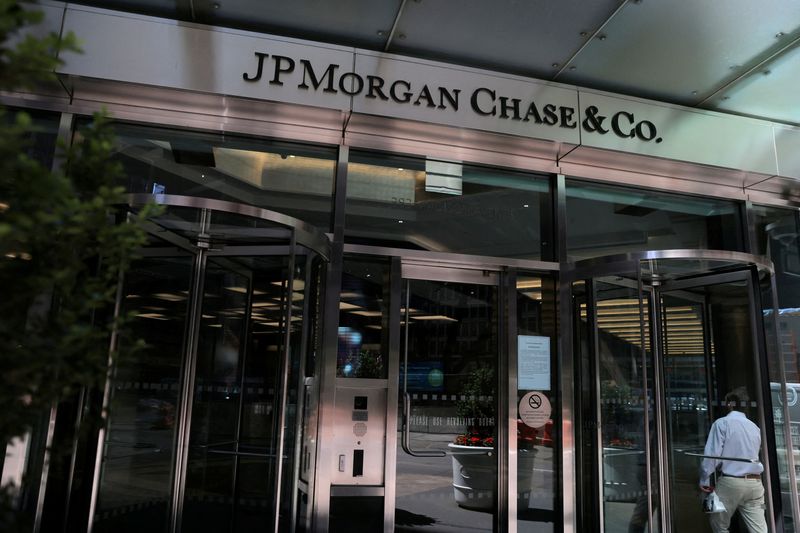(Reuters) – U.S. financial institution shares rose in premarket buying and selling on Thursday, a day after the Federal Reserve minimize rates of interest by 50 foundation factors, which is anticipated to scale back deposit prices and alleviate stress on debtors.
Elevated rates of interest have weighed on mortgage progress and shopper spending this yr, whereas additionally rising fears of debtors defaulting on their loans.
Industrial actual property mortgage portfolios have been below immense stress as a result of excessive charges and lack of demand for workplace areas, prompting banks to put aside billions as a cushion in opposition to delinquencies.
“For banks, particularly those that hold mortgages and auto loans, there may be a benefit to spreads in the near term,” stated Charlie Clever, senior vp and head of world analysis and consulting at TransUnion (NYSE:).
Citigroup led positive aspects in large-cap financial institution shares with a 1.8% rise earlier than the bell, adopted intently by Financial institution of America and Wells Fargo, which climbed 1.6% and 1.55% respectively.
JPMorgan, the most important U.S. financial institution by property and the sector’s bellwether, was final buying and selling 1.3% greater. Funding banks Goldman Sachs and Morgan Stanley had been additionally up in skinny premarket commerce.
REFINANCING WINDOW
Most auto loans and mortgages carry a set charge of curiosity, which suggests banks will proceed to fetch greater yields even after the minimize.
Debtors on the lookout for speedy reduction may additionally refinance their loans and negotiate higher compensation phrases, decreasing the chance of defaults.
Regional banks are anticipated to learn extra from charge cuts, in contrast with their bigger rivals, as elevated deposit prices normalize and the demand for loans recovers.
New York Group Bancorp (NYSE:) led positive aspects in regional banks with a 3.6% rise earlier than the bell. Banc of California (NYSE:), Fifth Third, Western Alliance (NYSE:) and Comerica (NYSE:) rose between 2% to 2.5%.
The Banks Index, which tracks large-cap banks, has gained 17.5% this yr, in contrast with an 18% achieve within the benchmark S&P 500. The KBW Regional Banking Index is up 4.4% over the identical interval.
Investor sentiment towards the sector had taken successful after three main gamers collapsed in early 2023, partially as a result of greater charges racking up unrealized losses on their mortgage books.

“(The cuts) will be credit positive for banks’ asset quality because lower rates make debt payments more affordable for borrowers with floating-rate loans,” stated Allen Tischler, senior vp of Monetary Establishments Group at Moody’s (NYSE:) Scores.
Nonetheless, lenders are maneuvering a fragile financial surroundings. Whereas traders count on the Fed to proceed easing within the coming months, some have questioned if the central financial institution is behind the curve.




